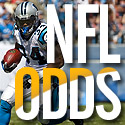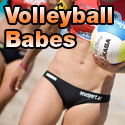Watered-down pitching & watered-down records
06/01/2001
Codding Home / Sports Channel / Bullz-Eye Home
What two names don't belong: Hank Aaron, Mickey Mantle, Babe Ruth, Jose Canseco, Mike Schmidt, Willie Mays, Ted Williams, Greg Vaughn, Jimmie Foxx, Ernie Banks.
... ... If you're still thinking about this brain buster, it's time to forget about sports altogether and maybe take up belly dancing or erotic acupuncture. Seriously.
For everyone else who guessed Jose Canseco and Greg Vaughn, congrats. You're the big winner, and as a reward, you get (trumpets and a drum roll please)... .
... the joy of reading the rest of this column! Woo-hoo!
When the 2001 baseball season began, there were 16 members in the prestigious 500-Home Run Club. Since then, Barry Bonds has received his laminated membership card --rumor has it he's not too fond of his picture -- and Fred McGriff, Rafael Palmeiro and Sammy Sosa have begun filling out their lengthy applications.
Of the club's 17 current members, two are still active (Bonds and Mark McGwire), 14 are enshrined in the Baseball Hall of Fame in Cooperstown, and one more (Eddie Murray) will no doubt be voted into the Hall in 2003, his first year of eligibility. Additionally, of those 14 Hall of Famers, all but two (Harmon Killebrew and Eddie Matthews) were voted in on their first ballots. Impressive, huh?
Yup, it's an exclusive organization indeed. In fact, the 3000-hit club (24) and the 300-win club (20) both boast longer membership lists than the group headed by Hank Aaron's 755 round-trippers. And because of that selectiveness, a player who swatted at least 500 dingers during his career had been considered a surefire Hall of Famer for decades.
But is that really the case anymore? I mean, Bonds is a first-ballot guy all the way, and certainly McGwire could get in on his first try, especially if he stays healthy long enough to reach 600 or more homers. But is the next batch of hitters poised to join this long ball guild really Cooperstown material?
Canseco (446), Ken Griffey Jr. (438), McGriff (425), Cal Ripken Jr. (420), Palmeiro (413) and Sosa (401) are the only active Major Leaguers, besides Bonds and McGwire of course, with 400 or more career jacks. Ripken probably won't carry many more than 440 homers with him to Cooperstown, and of the remaining five, Junior and Sammy appear to be the only locks to crack that 500 level. But Raffy and the Crime Dog, 36 and 37 respectively, could also reach the Promised Land. As of May 31, Palmeiro had 13 homers on the year and McGriff had eight. By the end of the season, these two should be pushing 450, possibly leaving them two healthy seasons from 500. As for Canseco, he too looks to be only a couple full seasons shy of that magical number, but this spring the Angels surprisingly cut the former MVP, leaving him with few options. Instead of calling it quits so close to an important achievement, Canseco chose to swing the lumber for the Newark Bears of the Independent League, and reports say several AL teams looking for a strong bat off the bench are now thinking about giving him a call.
So the question is, are these guys Hall of Famers? Griffey, with his 1997 MVP award, not to mention 10 Gold Gloves and a .296 career batting average, already has established his Cooperstown career, regardless of how many bombs he ends up with. But at only 31, an assault on Aaron's career mark is a realistic possibility for Junior and would only solidify his HOF credentials. It may only take Sosa, who will be 33 in November, one more year to reach 500, and at the rate he's been cranking long balls since 1998 (60 per season), he also could find himself in the 600-700 range by the time he's through. If that's the case, count Sammy in too.
But what about Canseco, McGriff and Raffy? Of the three, Canseco's the biggest name but he seems to have a tougher road to Cooperstown than McGriff and Palmeiro. Jose will be 37 next month and he's had injury problems, really, since 1992. In fact, since he played 154 games in 1991, Canseco has logged more than 120 games once, in 1998 when he played in 151 contests for the Blue Jays. In that same time span, he's played fewer than 100 games three times and has registered at least 440 at bats only once, again in 1998. So even if Canseco manages to catch on with another AL team that needs a full-time DH with a cranky back, hitting another 54 home runs would be a tough chore. But Palmeiro and McGriff are still producing at relatively high levels -- Palmeiro has belted 129 dingers over the past three years while McGriff has collected 78. And since both play in the American League, they could easily hang on another two or three years as part-time DHs, giving them plenty of time to get that last homer.
So for argument's sake, let's say Canseco, McGriff and Palmeiro all make it. When they finally take their analyst jobs with ESPN or Fox, let's say these three all have joined Reggie Jackson, Bonds, Frank Robinson and everyone else in the 500 Home Run Club. What's next?
I'd think Palmeiro has the best shot at Cooperstown. He's playing better ball right now than the other two, meaning he should end up with more long balls than McGriff and Canseco. Plus he's a career .295 hitter, a three-time Gold Glove winner at first base and a four-time All Star. He's driven in 100 or more runs every year since 1995 (averaging 124 RBI per season in that timeframe), he'll end up with more than 2500 hits, and he's struck out more than 100 times only once in his 15-year career.
McGriff, meanwhile, has a .287 lifetime average with 2,162 hits as of June 1. He's driven in 100 runs six times over 15 years, but his career-best was only 107 in 1996. McGriff has never been a flashy hitter -- his season highs of .318-37-107 don't exactly remind you of Lou Gehrig -- but from 1988-1994 he averaged nearly 35 homers and 95 RBI a year. He's never won a league MVP award, although he's finished in the top 10 in voting six times, and he's never won a Gold Glove either, but the Crime Dog is a five-time All Star and a World Series champ, winning it all with the Braves in 1995. Plus he's got a cool nickname.
And then there's Canseco, formerly of the Bash Brothers. Jose is a career .266 hitter, and over his 16 Major League seasons he's managed to pile up only 1811 hits, not to mention a whopping 1867 strikeouts, which is good enough for fourth all-time behind Reggie Jackson (2597), Willie Stargell (1936) and Schmidt (1883), all Hall of Famers themselves. Canseco was the 1986 Rookie of the Year and the league MVP in 1988, when he became the first player in MLB history to hit 40 homers and steal 40 bases in the same season. (Since then, Barry Bonds and Alex Rodriguez have accomplished the feat.) He's a six-time All Star and during his 16-year career, he's played in three World Series, all with Oakland, winning a ring in 1989 against the San Francisco Giants. In five of his first seven years in the league, Canseco drove in more than 100 runs, topping out at 124 RBI in his MVP year of 1988, but since then he's reached the 100-RBI plateau only once, in 1998. He has 1358 career RBI, which puts him at 59th on the all-time list, but 647 of those (47.6%) came in those first seven years; over the last nine years of Canseco's career, he's driven in only 711 runs and hit .263 with 237 homers. He's never won a gold glove, and let's not forget the day he had a ball bounce off his head and over the wall for a home run.
So after all those stats, who's Cooperstown material? If Palmeiro sticks around for another few years and gets his 500 homers, he'll probably make it. A .290-plus hitter with 500 homers, 2500 hits and a few Gold Gloves deserves it. McGriff won't be a first-ballot guy, and he may not make it at all, but his career was about as consistent as they come and if he somehow manages to reach the 500/2500 level, it may be hard to keep him out, especially with that World Series ring he's got.
But here's the real enigma. I just can't figure out Canseco. I went into this article ready to bash his Bash Brother career, but now I'm not so sure. Sure, he's fourth all-time with those 1867 strikeouts, but the three guys ahead of him have their plaques in Cooperstown. And unlike McGriff and Palmeiro, Jose has a Rookie of the Year award and, more important, an MVP trophy sitting on his coffee table. Plus, he's got a championship ring. So I can definitely see why there's at least an argument to let Canseco in.
But I'm just not convinced.
As I just mentioned, the three guys ahead of Canseco on the career strikeouts list -- Jackson, Stargell and Schmidt -- are all in the Hall of Fame, but all three had at least 2200 hits, and of this trio only Jackson had more strikeouts than hits: 2597 to 2584. But while the difference for Jackson was only 13 whiffs, Canseco notched 56 fewer hits than strikeouts. Plus, Reggie's nickname was Mr. October for a reason. He played in five World Series, hitting .357 with 10 homers in those games while leading his team to four championships. Canseco played in three World Series, hitting .156 in those games with three homers and winning only one ring.
And while his .266 average would not be the lowest in the 500 Club (Killebrew hit .256 and Jackson hit .262), only McGwire's 1574 career hits falls below Canseco's 1811. Everyone else, from Aaron on down to Murray, managed to collect at least 2000 base knocks. As for the difference between McGwire and Canseco, Big Mac holds a major record, he's a 12-time All Star, a 1990 Gold Glove winner and he's led the league in homers four times; Canseco's done it twice. Plus, McGwire's still productive... when he's actually on the field, that is.
Look, the bottom line here is that the Hall of Fame should be reserved for only the elite of the elite, not merely the elite of the good, or even the elite of the very good. Canseco was unquestionably a very good power hitter, and sure, if he found his way back to the Majors and collected those final 54 jacks, he'd only be the 18th player in history to reach 500. I understand that. But aside from his MVP season, Canseco was a very one-dimensional player. His defense was horrible, his strikeouts were maddening and his inability to stay healthy was irritating to his team and to his fans. That's not the kind of player I want to read about when I go back to Cooperstown, even if he gets that final, cherished home run.
It's sad to say, but in an era when 160-pound shortstops are hitting 30 homers a year, the prestige that went hand-in-hand with the 500 Home Run Club has been tarnished a bit, which makes it easier for me to lobby against guys like Canseco. Bonds, McGwire, Griffey and Sosa all have a very real chance to reach 600, 700 or maybe even 800 home runs before they retire. In the more than 100-year history of this great game, only three players have managed to top 600 -- Aaron, Ruth and Mays. These guys are legendary. They're the guys you envision whenever you're sitting in the bleachers watching an afternoon game. When the Babe was hitting his 714 jacks, he was hitting more home runs than most of the other teams in baseball, let alone players. And then forty years later Hammerin' Hank broke the unbreakable record, passing Babe with his 715th and never looking back. The fact that Mays even came within 55 of Ruth's record is amazing, too. But now four guys could approach 755? It's sad.
If you go back 10 years, maybe even just five or six, the 500 Home Run Club was majestic. The math boggled the mind: "If you hit 30 homers a year for 15 years, you'll still end up with only 450. That's 50 shy of immortality." That's what made Aaron and Ruth and Foxx and Banks so special. It was a magical number, a group that only the game's absolute best could ever hope to reach.
But now things have changed. Good players will soon join the party and great players will take the numbers to new heights. In 20 years, we could honestly see this list balloon from 17 to 30 or 40 players, or more. No joke. Think about it for a second: Troy Glaus, the excellent third baseman for the Angels, is only 24 and he's already got 91 homers, 29 his rookie year, 47 last year and 14 this season. Let's say he ends the year with 45 round-trippers, giving him 122 for a three-year career and leaving him only 378 short. He could realistically be 35 and have his 500 homers -- that's only 38 a year for the next 10 years. If he played until he was 40, then Glaus would only need to hit 25 a year. Five or 10 years ago, sure, that may have been a long shot. But today? With the watered-down pitching, expansion, Coors Field, juiced balls? Hell, guys are hitting 45 homers in their late 30s -- check out Mr. Palmeiro and Bonds.
What about Manny Ramirez and his 252 career homers? He's only 29, and you give him at least 25 more this year, that leaves him 223 short at the age of 30. That's no problem: 23 a year for 10 more years? Or maybe 45 each season for only five more years. You don't think Manny Ramirez can do that? He hit 127 from 1998-2000 and already has 16 this year. Or how about Todd Helton? He plays in Colorado, for crying in thin air, and at 27 he's got 124, 17 of those coming this year. Give him another 23 this year at the very least and he's 353 shy of 500 before his 28th birthday. Come on, you can do the math: 36 a year for another 10 years and he's got it.
The sad truth is guys are hitting 45 homers a year and we don't even flinch. Alex Rodriguez -- who would have found his way into the Hall anyway, regardless of how many homers he hit -- has 206 at the age of 25. Carlos Delgado has 207 at 28 and his teammate, Tony Batista, has 113 at 27, but has seen his totals soar each year, from 18 in 1998, to 31 in 1999, to 41 last year and 13 thus far in 2001. Speaking of teammates, Atlanta's Chipper Jones is 29 and has 203 for his career, and Andruw Jones at 24 already has 130. Shortstop Miguel Tejada? He only has 77, but he's also only 25 and is just now finding his power stroke -- he hit 11 balls out of the yard in 1998, 21 in 1999, 30 last year and 13 already this year. Then of course there's Mike Piazza, who finds himself 208 homers shy at the age of 32. And I haven't even mentioned Jeff Bagwell, Juan Gonzalez, Gary Sheffield and Greg Vaughn, who all have a shot at 500 if they can stay healthy.
Sure, guys like A-Rod, Piazza and Manny may get to the Hall of Fame even without 500 homers on their résumé, but I just pinpointed nine guys all under the age of 30 who easily could join the 500 Club within the next 10 years, and then five more over 30 who could get their membership cards in three or four. That's a total of 14 within the next 10 years, nearly doubling the number of current members. And that's not even including Griffey, Sosa, Palmeiro and McGriff. To date, the highest number of players to hit their 500th homers within 10 years of one another was six: Aaron, Mays, Mantle, Williams, Banks and Matthews all accomplished the feat between 1960-1970. Could we really see as many as 18 do it before 2011? What do you think?
And there's one more thing to consider. There are five players who all retired within 50 homers of the 500-mark -- Gehrig (493), Stan Musial (475), Stargell (475), Dave Winfield (465) and Carl Yastrzemski (452). You can't really expect that to happen in today's money-driven, numbers-oriented game. First, a player who finds himself so close to a milestone that would traditionally book his flight to Cooperstown will do everything in his power to hang on until he's blasted that last dinger. Call it the Rickey Henderson Agenda, if you'd like. And second, struggling teams in desperate need of both cash flow and publicity make it much easier for these players to land a job in their early 40s. "Come to the ballpark tonight for a chance to see Wade Boggs get his 3000th hit... and while you're at it, try to stomach a Devil Rays game, too!" You can call that one the Tampa Bay Syndrome. Agents know all of that and love to use it as leverage when trying to get that final contract for their aging clients -- how do you think Barry Bonds is going to find his $18 million-a-year deal this offseason? What owner wouldn't want to have someone who's chasing the Babe and Hank Aaron on his team? Especially if he can just be thrown into the lineup everyday as the DH, keeping his sluggish legs and hands on the bench until it's time to bat again.
Unfortunately, it looks like the once-esteemed 500 Home Run Club will slowly begin to lose some of its mystique as simply good players like Canseco and McGriff join the game's genuine greats. And while it's true that we often don't fully appreciate celebrities until well after they've slipped from the public eye, I don't think even 50 years from now I'd be able to support Canseco's Cooperstown arrival. A Hall of Fame career should be one that represents both superiority and consistency, and once upon a time those two qualities were also present in the 500 Home Run Club. But much like today's pitching, the quality of the players on that list will soon become diluted, and if we don't change our standards, the quality of the players we admire in the Hall of Fame will naturally deteriorate as well. Don't get me wrong, hitting all those home runs still is a magnificent accomplishment, but if dozens of players are doing it every 10 or 15 years, just how magical can it really be anymore?
Note: Take a second to cast your vote -- is Jose Canseco a Hall of Famer in your eyes?
In the Bullz-Eye
The fully rested LA Lakers. Sure, it looks like Kobe and Shaq will have no problem repeating as champs this year, no matter who manages to sneak out of the East. But you know as well as I do that these guys would love to put their stamp on NBA history by being the first team to sweep through the playoffs. Phil Jackson would then have another impressive league record to go along with his 72-win season in Chicago, and the two kids would finally prove to everyone that they get along well enough to thump everyone else in basketball.






